Get weekly tips, recipes, and my Herbal Jumpstart e-course! Sign up for free today.

Interesting Coffee Facts
Share this! |
|
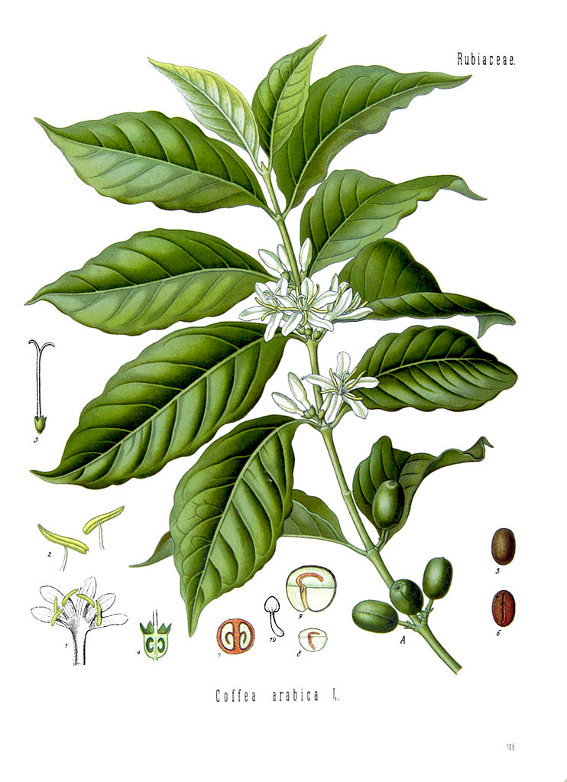 |
In the previous articles on this amazing plant we covered the history of coffee as well as the health benefits of coffee. We now turn to some interesting facts on the coffee plant and what factors contribute to making that perfect cup. |
Botanically Speaking
There are three major coffee species in the world. This article mainly focuses on Coffea arabica, which accounts for 70% of the cultivated coffee in the world. Coffea arabica is believed to be native to Ethiopia and possibly Yemen. It prefers a steady amount of rainfall during the year and does not tolerate frost, leaving it most habituated to growing in equatorial regions. Today coffee is grown around the world, including Brazil, Vietnam, Columbia, Guatemala, Ethiopia, Mexico, and many other countries.
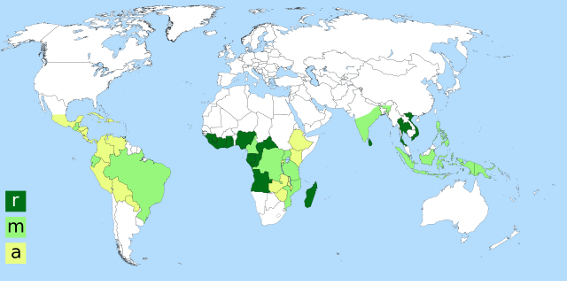
Coffee trees naturally grow to 15 feet, but are often trimmed in cultivation to assist harvest. The leaves are simple, dark green and glossy. They are 4-6 inches long and 2.5 inches wide. The flowers are white, fragrant and bloom at the same time.
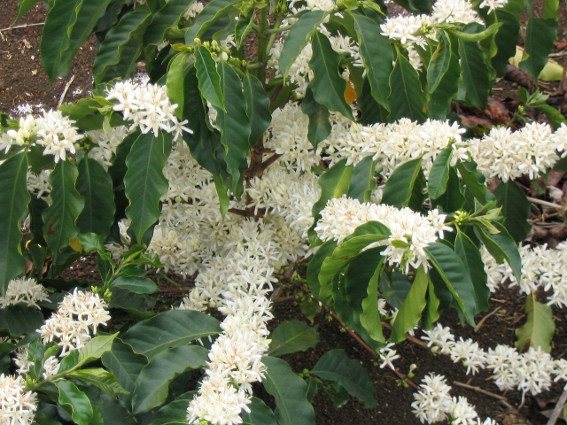 |
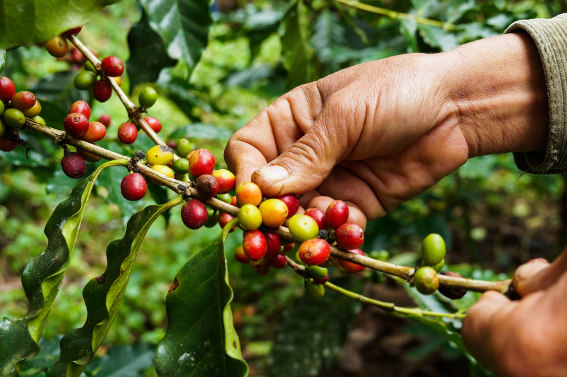 |
Coffee produces cherry-like fruits that ripen to a bright red color and contain two seeds. The berries in each cluster ripen at different times, making mechanized harvest impossible. All coffee is therefore gathered by hand.
The first step after harvest is to remove the fleshy part of the fruit and the slimy thin covering around the seeds. The seeds (“beans”) are then dried. The resulting seeds are green to brown in color. Farmers sell this green or raw coffee bean.
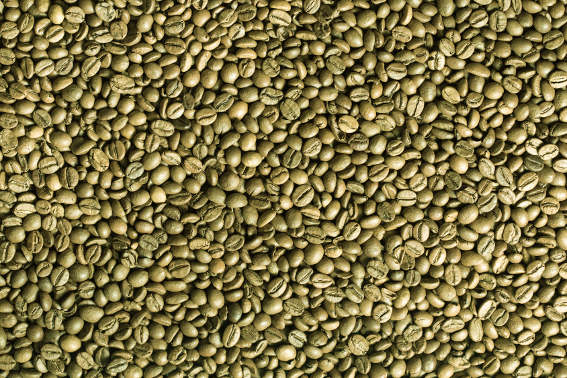
Unlike in its native habitat where it is a forest shrub, coffee production is increased when grown in monoculture plantations. Huge amounts of native forest have been slashed and burned to accommodate burgeoning coffee plantations in equatorial regions. Monoculture plantations make the coffee crop more susceptible to diseases and pests, leading to an abundance of harmful pesticides being sprayed on the plants. Since many of these plantations are in areas with less stringent safety and environmental laws, a wide variety of harmful chemicals that are banned by many countries are still being used on coffee plantations.
Coffee naturally grows as a small shrub as part of a forest understory. Some coffee plantations are using shade-grown cultivation methods to promote biodiversity, retain forests, and reduce pesticide use.
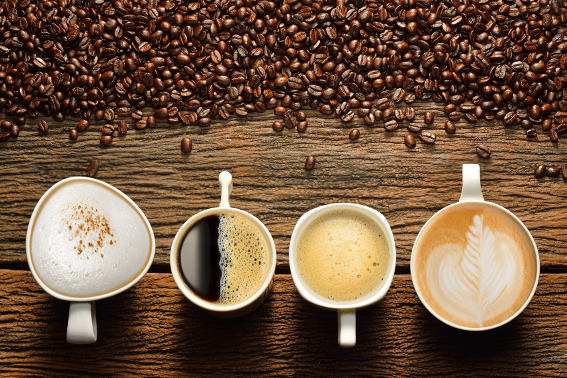
Plant Preparations
Okay, I’ll admit it…I adore coffee. I am very grateful that in my small rural valley we have an exceptional coffee roaster, Blue Star Coffee Roasters. Dan Donohue, one of the owners of Blue Star, graciously gave me a two-hour tour of their roasting plant. I was able to watch the roasting process and interview Dan, who has an impressive amount of knowledge about sourcing, roasting and preparing coffee.
Blue Star buys green coffee beans from fair-trade, organic, and shade-grown coffee farms from around the world. Donohue explained that the taste of coffee beans varies widely depending on the growing conditions and the climate. From year to year coffee beans produced from a single coffee shrub can vary dramatically. As an herbalist I found this especially interesting and a further evidence that nature just can’t be standardized.
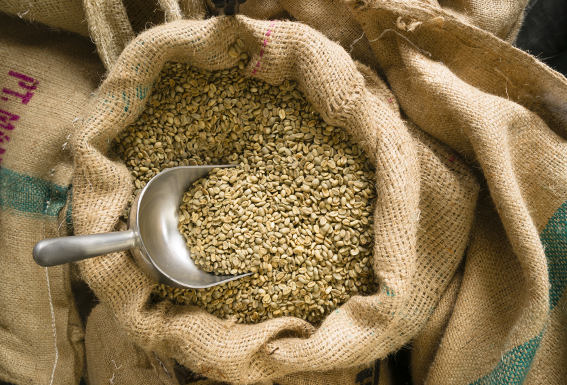
The sourced green coffee beans are then brought back to the roasting plant. The roasting of the beans is quite a science. The amount of time and the temperature of the roaster play a big role in the final taste. Blue Star has their own unique recipes, including roasting times and temperatures, to create their signature blends. Donohue pointed out that this highly specialized and artisanal roasting came about after the Industrial Revolution. Before commercial roasters, people more commonly bought and roasted the green coffee beans themselves.
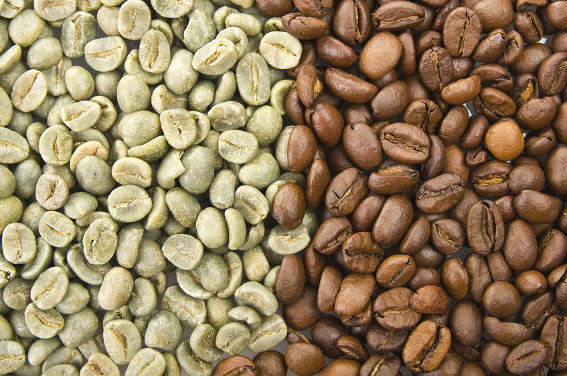 |
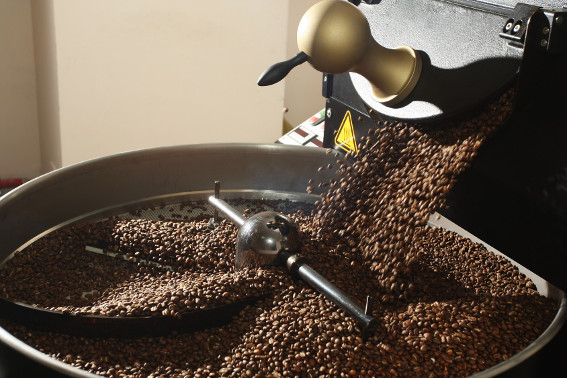 |
The coffee beans go through a chemical transformation as they are roasted. They lose approximately 20% of their weight but they also increase their volume. Donohue recommends letting freshly roasted beans sit for several days before brewing.
Raw coffee beans are fresh for about a year, whereas properly stored whole roasted coffee beans are best consumed within six months. Donohue says that if you have a sophisticated palette, you can track changes in the taste of the beans over those six months. Once the beans have been ground, use them within the week.
Grinding beans is another critical part of brewing that perfect cup of coffee. Finely ground beans lend themselves to a quick pressurized water extraction like espresso. A medium-sized grind lends itself better to drip or pour-over coffee.
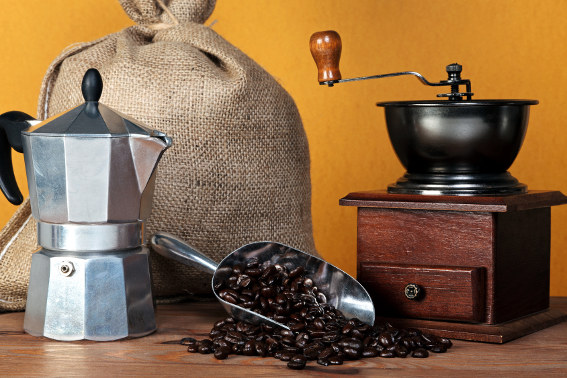
To get that incredible cup of coffee, look for a small coffee roasting company near you that offers fair trade, organic, and shade-grown coffee. If that’s not available, then Blue Star Coffee Roasters ships freshly roasted coffee and even offers subscriptions.
In recent years, single-serving coffee brewers have risen in popularity. While some may argue that these beans-plus-filter devices are convenient, they are also considered to be of low quality and produce an embarrassing amount of plastic and aluminum waste. The coffee in these single-cup preparations is rarely fair trade, organic, or shade-grown, which means it has already wreaked human and environmental damage before it even reaches the coffee pot.
Decaf vs Regular Coffee
Decaf coffee has had the majority of the caffeine taken out of it. Caffeine was previously extracted by soaking the coffee in chemical solvents like benzene, a known carcinogen. These days, dichloromethane and ethyl acetate are used to decaffeinate coffee. Proponents of this method claim that very little of the solvents remain on the coffee beans. However, concerns about these chemicals aren’t just about the end-product, but also are about what we introduce into the environment in the process. If you like to avoid known carcinogens and the creation of chemical wastes, then look for coffee that has been decaffeinated using water or CO2 instead of chemical solvents.
Decaffeinated coffee is often wrongly thought to be completely caffeine free. Decaf coffee still has approximately 3% caffeine and may adversely effect people who are sensitive to caffeine.
Summary
Coffee is an antioxidant-rich beverage enjoyed by over 50% of people in the U.S.
It offers a wide range of health benefits but, like all substances, is best enjoyed in moderation.
Some people may find that they can enjoy coffee regularly without experiencing adverse effects. Others may find that even small amounts of coffee don’t agree with them, or that by using coffee as a crutch for other unhealthy behaviors (e.g., in place of sleep, to burn both ends of the candle, to mask energy fluctuations due to a bad diet), they experience more pronounced adverse effects. A “healthy” dose of coffee varies from person to person.
Coffee is a major global commodity and contributes to the livelihood of over 75 million people. Many coffee farmers work in horrible conditions and are not paid a living wage. Some profit-driven plantations cut native forests to make room for their plantations and then spray those plantations with a variety of harmful chemicals. If you choose to drink coffee for health or for pleasure, you can support human rights and healthy environmental practices by buying fair trade, organic, shade-grown coffee.

Rosalee is an herbalist and author of the bestselling book Alchemy of Herbs: Transform Everyday Ingredients Into Foods & Remedies That Healand co-author of the bestselling book Wild Remedies: How to Forage Healing Foods and Craft Your Own Herbal Medicine. She's a registered herbalist with the American Herbalist Guild and has taught thousands of students through her online courses. Read about how Rosalee went from having a terminal illness to being a bestselling author in her full story here.